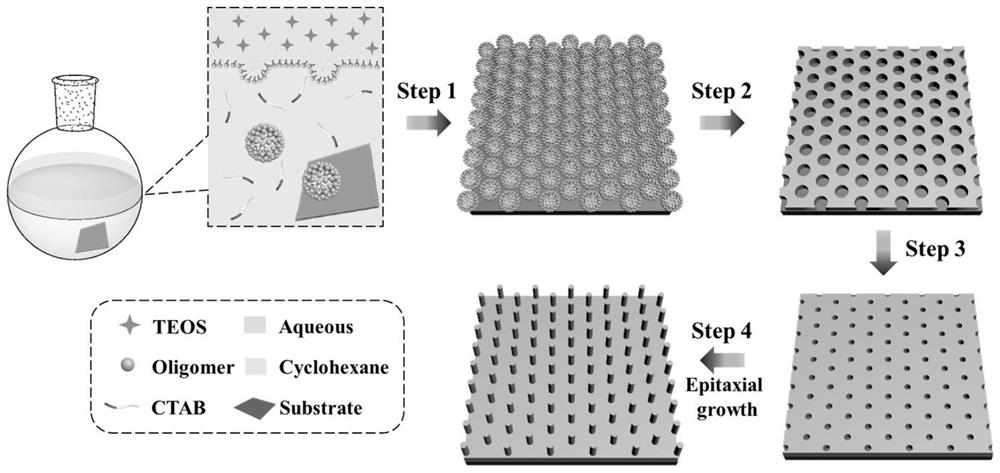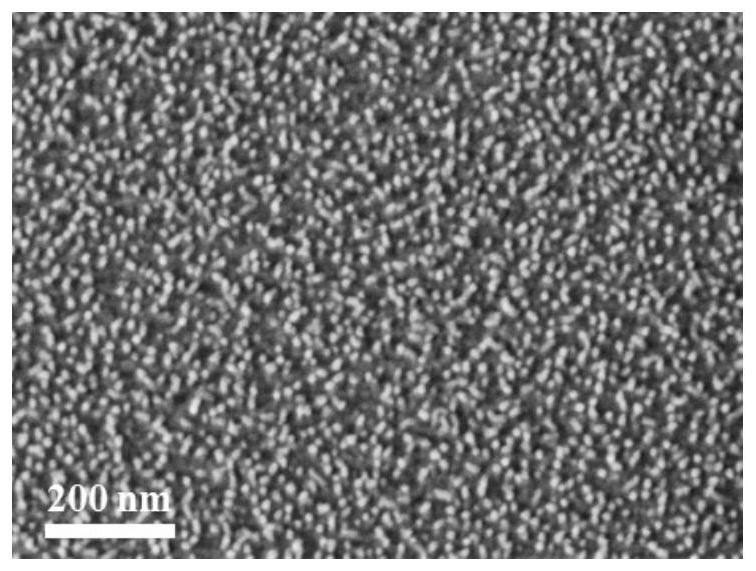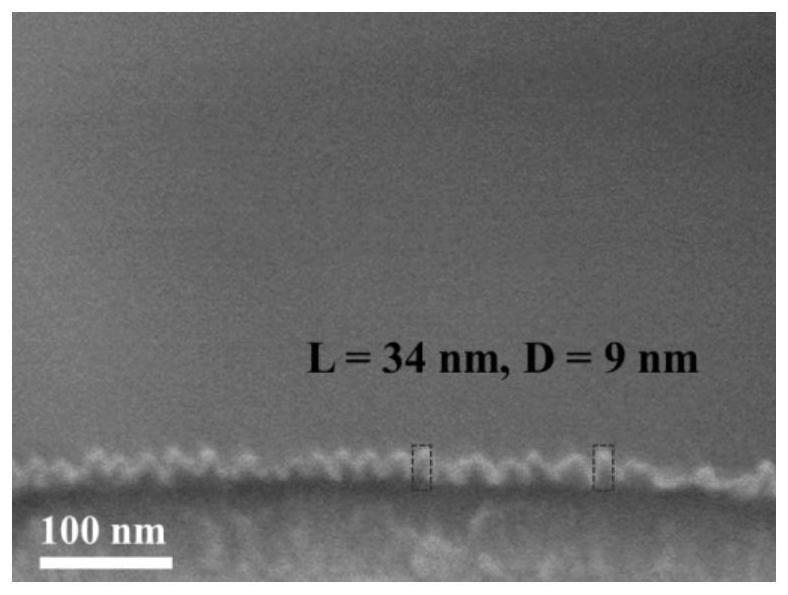Silica nanoarray with controllable morphology, preparation method and application thereof
A silicon dioxide and nanoarray technology, applied in the field of nanomaterials, can solve the problems of complex processing process and difficult to control surface structure, etc.
- Summary
- Abstract
- Description
- Claims
- Application Information
AI Technical Summary
Problems solved by technology
Method used
Image
Examples
Embodiment 1
[0054] Growing silica nanoarrays on silicon wafers:
[0055] (1) Dissolve 0.5 wt.% cetyltrimethylammonium bromide (CTAB) and 0.008 wt.% sodium hydroxide in water in turn to obtain a clear solution, and control the temperature to 60 °C;
[0056] (2) Add silicon wafers and continue stirring at 60 °C;
[0057] (3) add the mixed solution of cyclohexane and tetraethyl orthosilicate (TEOS), and control the volume ratio of cyclohexane, TEOS and water to be 6: 1.5: 10;
[0058] (4) Control the temperature to 60 °C and react for 48 h;
[0059] (5) After the reaction is completed, the silicon wafer is taken out and washed.
[0060] The silicon dioxide nanoarray layer grown on the silicon wafer was obtained, and the distribution density of the silicon dioxide nanoarray (spikes) was 510 nanospurs / μm 2 , the average distance between adjacent silica nano-peaks is 46 nm. like Figure 4 , Figure 5 shown.
Embodiment 2
[0062] Growing silica nanoarrays on glass rods:
[0063] (1) Dissolve 2 wt.% cetyltrimethylammonium bromide (CTAB) and 0.01 wt.% sodium hydroxide in water in turn to obtain a clear solution, and control the temperature to 60 °C;
[0064] (2) Add a glass rod and continue stirring at 60 °C;
[0065] (3) add the mixed solution of cyclohexane and tetraethyl orthosilicate (TEOS), and control the volume ratio of cyclohexane, TEOS and water to be 6: 1.5: 10;
[0066] (4) Control the temperature to 60 °C and react for 48 h;
[0067] (5) After the reaction, the glass rod is taken out and washed to obtain a silicon dioxide nanoarray layer grown on the glass rod. like Image 6 , Figure 7 shown.
Embodiment 3
[0069] Growing silica nanoarrays on glass tubes:
[0070] (1) Dissolve 2 wt.% cetyltrimethylammonium bromide (CTAB) and 0.01 wt.% sodium hydroxide in water in turn to obtain a clear solution, and control the temperature to 60 °C;
[0071] (2) Add a glass tube and continue stirring at 60 °C;
[0072] (3) add the mixed solution of cyclohexane and tetraethyl orthosilicate (TEOS), and control the volume ratio of cyclohexane, TEOS and water to be 6: 1.5: 10;
[0073] (4) Control the temperature to 60 °C and react for 48 h;
[0074] (5) After the reaction, the glass tube is taken out and washed to obtain a silica nano-array layer grown on the glass tube. like Figure 8 , Figure 9 shown.
PUM
| Property | Measurement | Unit |
|---|---|---|
| height | aaaaa | aaaaa |
| thickness | aaaaa | aaaaa |
| length | aaaaa | aaaaa |
Abstract
Description
Claims
Application Information
 Login to View More
Login to View More - R&D
- Intellectual Property
- Life Sciences
- Materials
- Tech Scout
- Unparalleled Data Quality
- Higher Quality Content
- 60% Fewer Hallucinations
Browse by: Latest US Patents, China's latest patents, Technical Efficacy Thesaurus, Application Domain, Technology Topic, Popular Technical Reports.
© 2025 PatSnap. All rights reserved.Legal|Privacy policy|Modern Slavery Act Transparency Statement|Sitemap|About US| Contact US: help@patsnap.com



